Last updated on September 2nd, 2024
Lead image: Ostuni, the ‘white city’ on a sunny day in January 2024 / Photo credit Carolyn Ray
An off season stay in Puglia shows the strength of community
by Carolyn Ray
There’s something magical about walled cities. Italy has many of them, including Lucca and Siena, in Tuscany. In January 2024, the walled city of Ostuni, in southern Italy, is my home base. Perched on a hilltop, Ostuni overlooks the Adriatic Sea and hundreds of acres of olive farms. Arriving by train, I’m immediately charmed, especially after the hustle and bustle of Florence, where I’ve just spent the holidays.
As I walk through Ostuni’s city gates, I imagine the events that came before. What would it have been like to live here 1,000 years ago? Or to have been the person who spotted invaders or defended Ostuni’s citizens against the Greeks, Romans, Byzantines, Normans or Visgoths? In walled cities, I feel a sense of safety and community, as if we’re all part of the same tribe, looking out for each other.
Ostuni in the low season
Located near the larger centres of Bari, Brindisi and Lecce, Ostuni has a population of about 32,000 in the low season, compared to 200,000 in the summer. In January, when I arrive, the main street still sparkles with twinkling lights and decorated pine trees, and there’s a Christmas tree in the main piazza.
It’s warm enough to eat outside, and my favourite time is my daily cappuccino in the sunny Piazza della Libertà, which becomes an education in Italian culture. Every morning, farmers crisscross their cars every which way on the narrow street in front of the coffee shop. In a ritual that lasts all of five minutes, they jump out, talk vigorously, throw back an espresso, clap shoulders and head off. The coffee shop owner doesn’t speak any English, and I can only offer basic Italian, but between smiles and hand gestures, we find an unexpected camaraderie that surprises me when I visit Palermo in February.
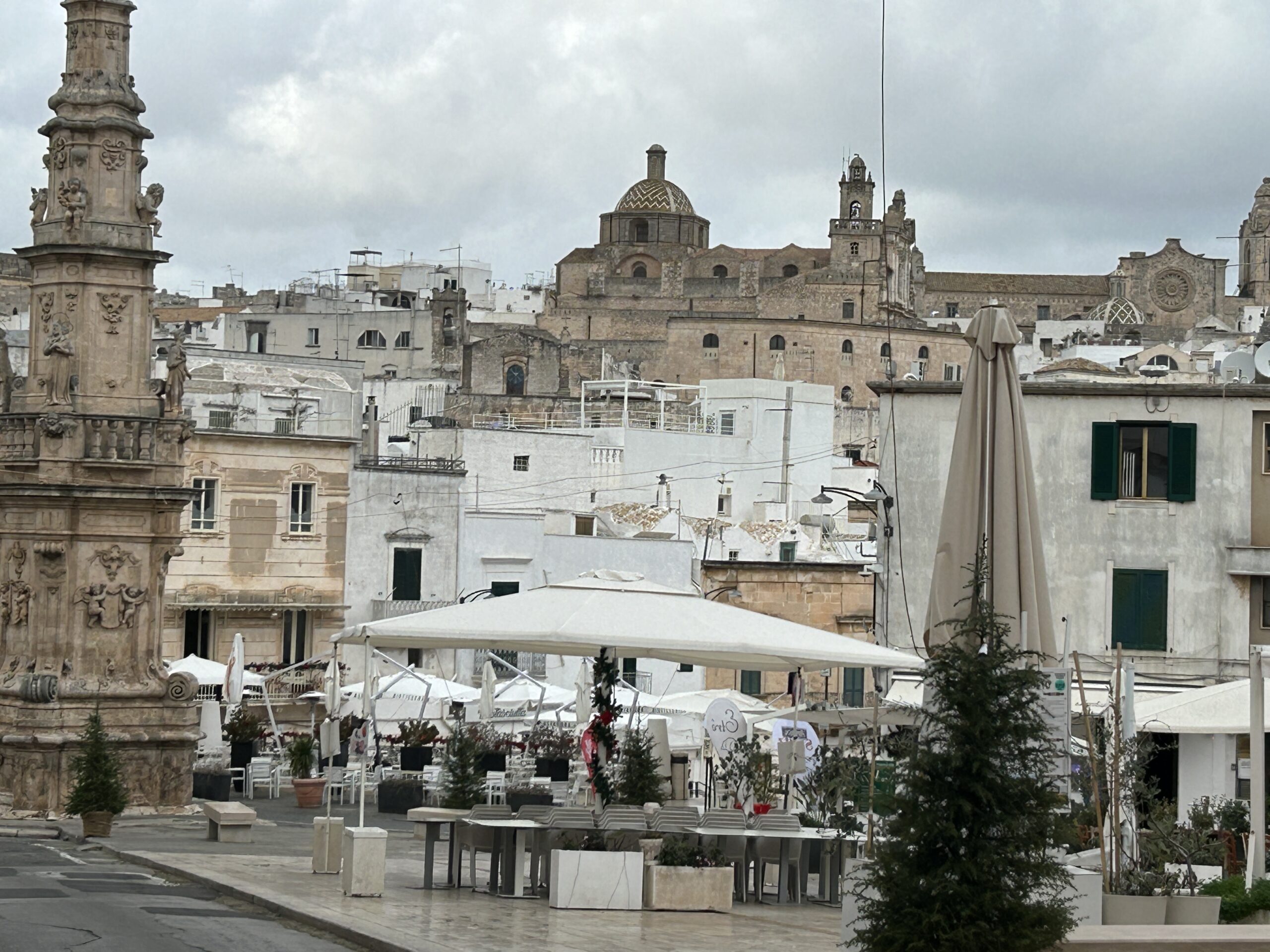
Ostuni’s main square in January 2024/ Photo credit Carolyn Ray
Wandering the old town
Ostuni is a photographer’s dream.
In the mornings, I ramble through the whitewashed old town, with its small shops and restaurants, looking for angles and light that excite me. Hints of the Middle Ages are in every corner, in every view to the sea, in the portal of a palace, in the walls of a convent or the front of a church. From the Corso Vittorio Emanuelle II viewpoint, I get a picture-perfect view of the city and its gleaming white walls on a sunny day.
In 1743, an earthquake damaged the town and its walls. Of the city gates, only two survived the earthquake, Porta Nova and Porta San Demetrio. Porta Nova is on the western side of the town, built in the 15th century to replace the previous gate. Porta San Demetrio, on the eastern side of the town, is the most ancient gate in the city, dating back to the medieval period.
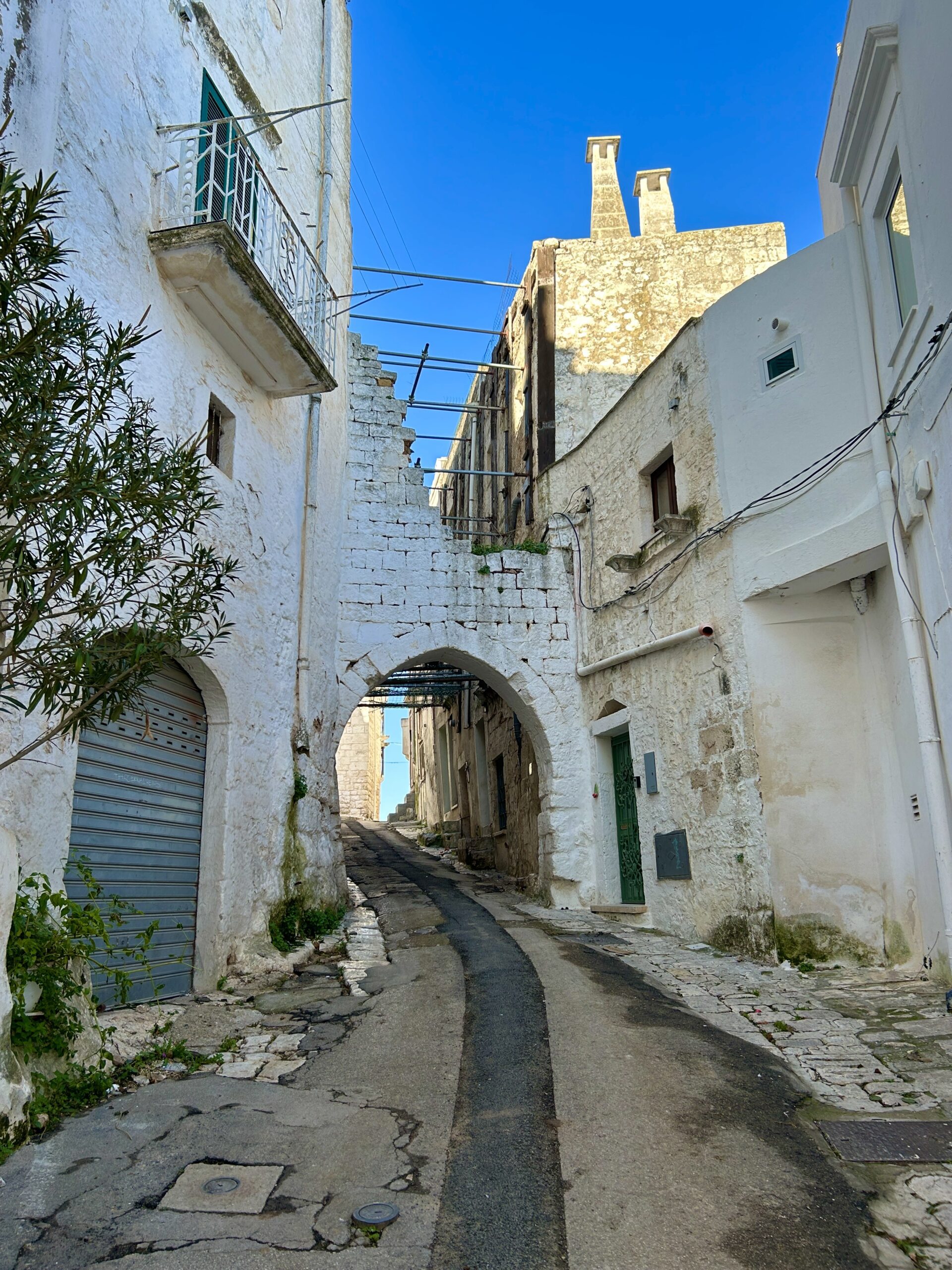
Porta San Demetrio, the oldest gate in the city, under repair / Photo credit Carolyn Ray
Community and food
In this part of Italy, Puglia, the heel of Italy’s boot, is responsible for nearly half of Italy’s olive oil and almost 15 per cent of worldwide production. Olive oil and wine tastings are offered on almost every corner, and why resist? A one litre tin of Olio olive oil is 13 euros and lasts for two weeks. While many countries tout their olive oil as the best, I can’t help but fall in love with Ostuni’s version, which graces my meals made at home alongside fresh vegetables from the Mercato del Sabato.
Every Saturday, I walk to a street market for fresh vegetables and cheese right from the farms nearby. It’s artichoke season and I can get five artichokes still on the stem for 4 euros. Lamb’s lettuce still wet with water is 1 euro. There’s chicory, kale, fresh cheese floating in cups, and tomatoes on the vine. Ten kinds of local olives to choose from, and olive oil made in Ostuni that melts in your mouth. And the almonds — all local, all fresh, for a small fraction of what food costs in Toronto. The food shows me how disconnected I’ve become from food and seasonality.

Ostuni’s holiday streets / Photo credit Carolyn Ray

Winding streets in the old town / Photo credit Carolyn Ray
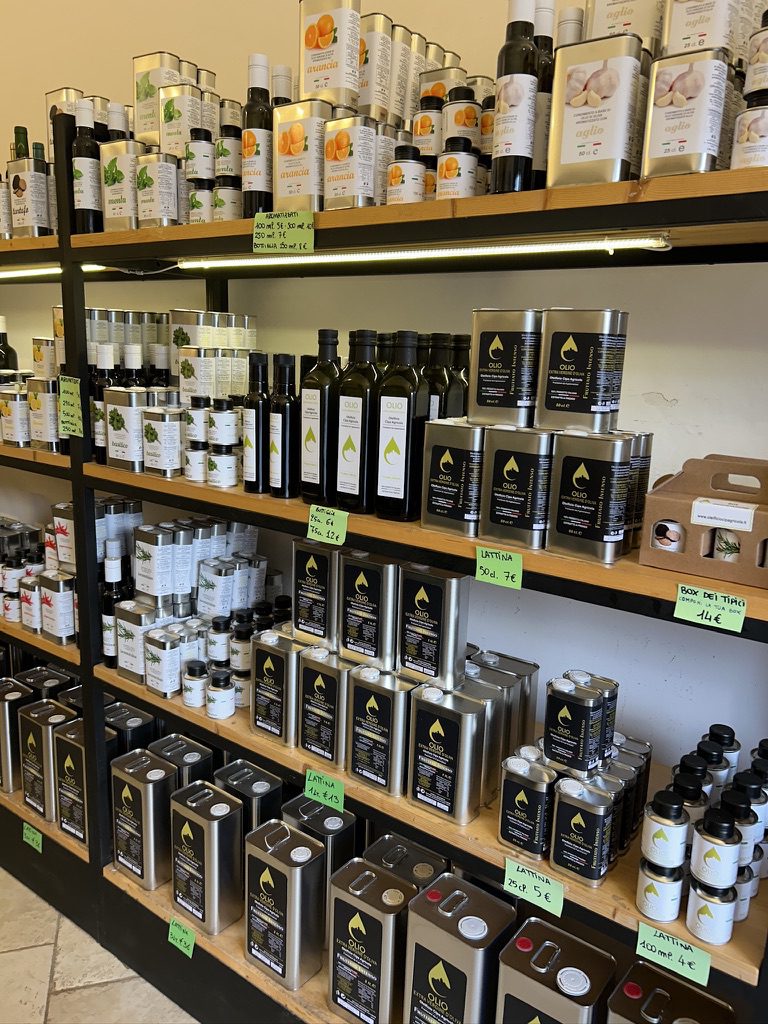
Local olive oil / Photo credit Carolyn Ray
In the parking lot below the food stalls, it’s even busier. There is luggage, purses, makeup, socks and books, and musicians, families strolling, smiling and laughing. This isn’t just a market, it’s a community gathering. A way for people to connect every week, just like the coffee shop.
On Sundays, there’s also an enormous flea market in and around Parco Rimembranze, with hundreds of tables featuring antiques, terra cotta olive oil jars, jewelry, war memorabilia and more. I’m tempted to buy a statue or ceramics as a momento of my travels, but I resist. It’s actually more fun to watch the negotiations and smiles among friends and family.
After a few days of exploring the village, I’m able to navigate without a map to the grocery store (there’s a Despar and two Carrefour markets within a short walk). Here, the wine is about 3 euros and there’s warm bread, green peppers, cabbage, multi-coloured broccoli and vegetables with Italian signs of origin. Nothing packaged in plastic bags. There’s pride in where the food comes from, and eating local is a way of life.
Read More: Lost in Lecce: A Baroque Jewel in Puglia
The ‘Woman of Ostuni’
One of my most surprising discoveries is the ‘woman of Ostuni’, the most ancient mother ever found by paleoanthropologists, at 28,000 years old BP. The area around Ostuni has been inhabited since the Stone Age, and there is a treasure trove of discoveries in the Museum of Pre-Classical Civilizations of the Southern Murge.
More than 50,000 years ago, Neanderthals lived in what is now Ostuni, in Puglia, Italy. These were hunters who lived in tribes, and many of their artifacts have been discovered in nearby caves, including ceramics and ornaments, flints, stone tools, starting from the Paleolithic up to the metal age.
In 1991, in the cave of St Mary d’Agnano, the skeleton of a 20-year-old pregnant woman was found. Named Delia, she had one hand above her head and the other hand on her abdomen to protect her baby.
As a mother, seeing something like this stirs up all kinds of emotions. Aren’t many women in the world still suffering the same fate?
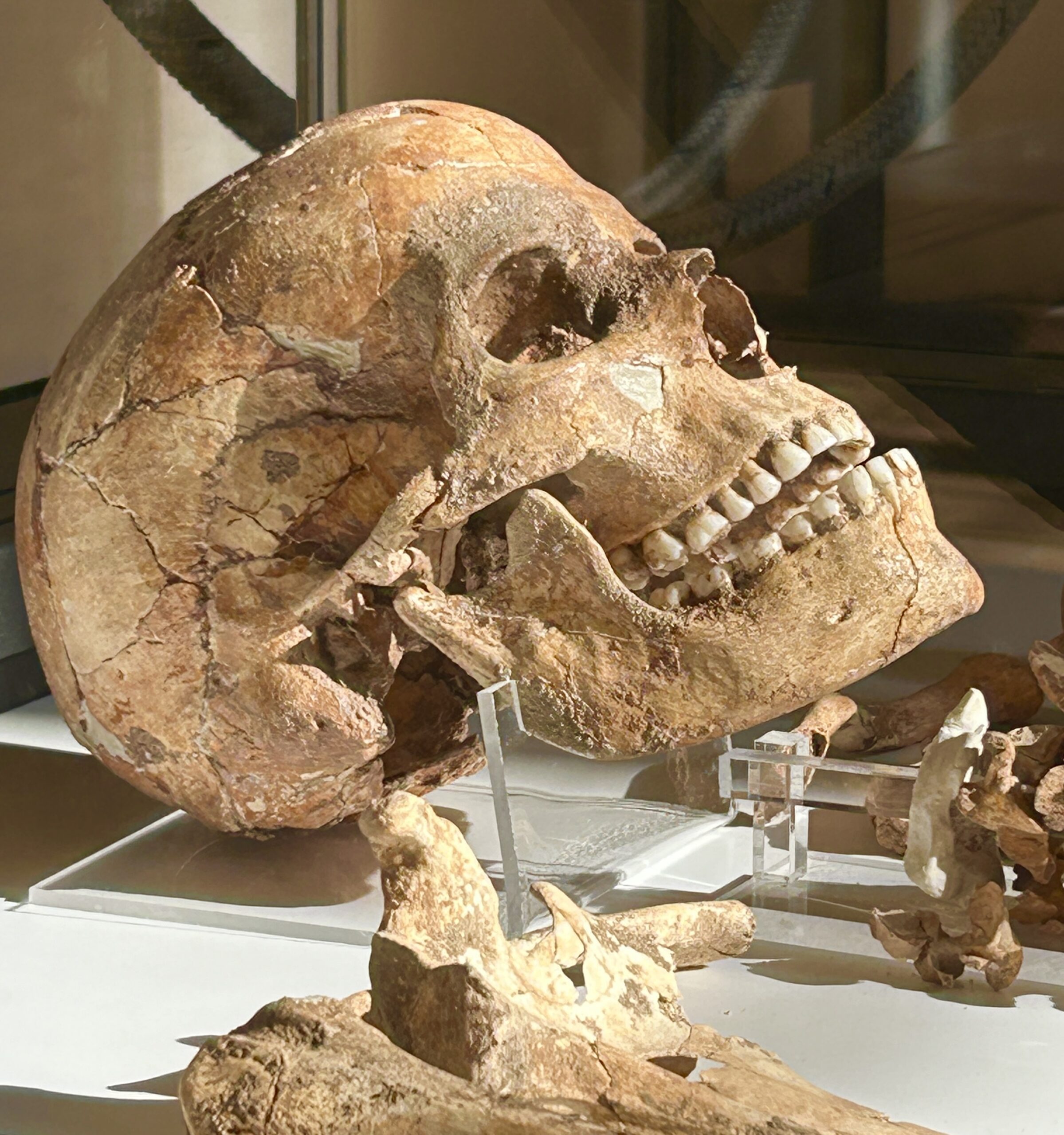
Delia, the oldest mother in the world / Photo credit Carolyn Ray
Ostuni’s Old Town
From a distance, Ostuni looks large, but once I have walked around the entire city, I realize it is much smaller than it looks. The cobblestone road that winds up through the old town is shaped like a spiral, with small alleys, little boutiques and charming restaurants.
I find many trattorias run by families, including Fave e fogghje restaurant (like stepping back into the 1950s), Osteria del Tempo Perso, Sapere e Sapori, and Osteria Piazaetta Cattedral. It’s not expensive to eat here. An average meal with a glass of wine is about 18 euros, far less than I’d pay at home. On my first night, I find myself in L’Arco Dei Sapori, quite possibly the most vibrant restaurant I’ve ever been in, enjoying fresh pasta, cheese and tomatoes slathered in olive oil. Heaven.
The Catterale di Ostuni (Duomo di Santa Maria Assunta) is a simple church, built on the highest point in the city. Beside the Cathedral is the Palazzo del Seminario, which is connected to the Bishop’s building by a beautiful stone arch, the Arco Scoppa, built in 1750. It’s so picturesque here, especially when I’m the only one here!
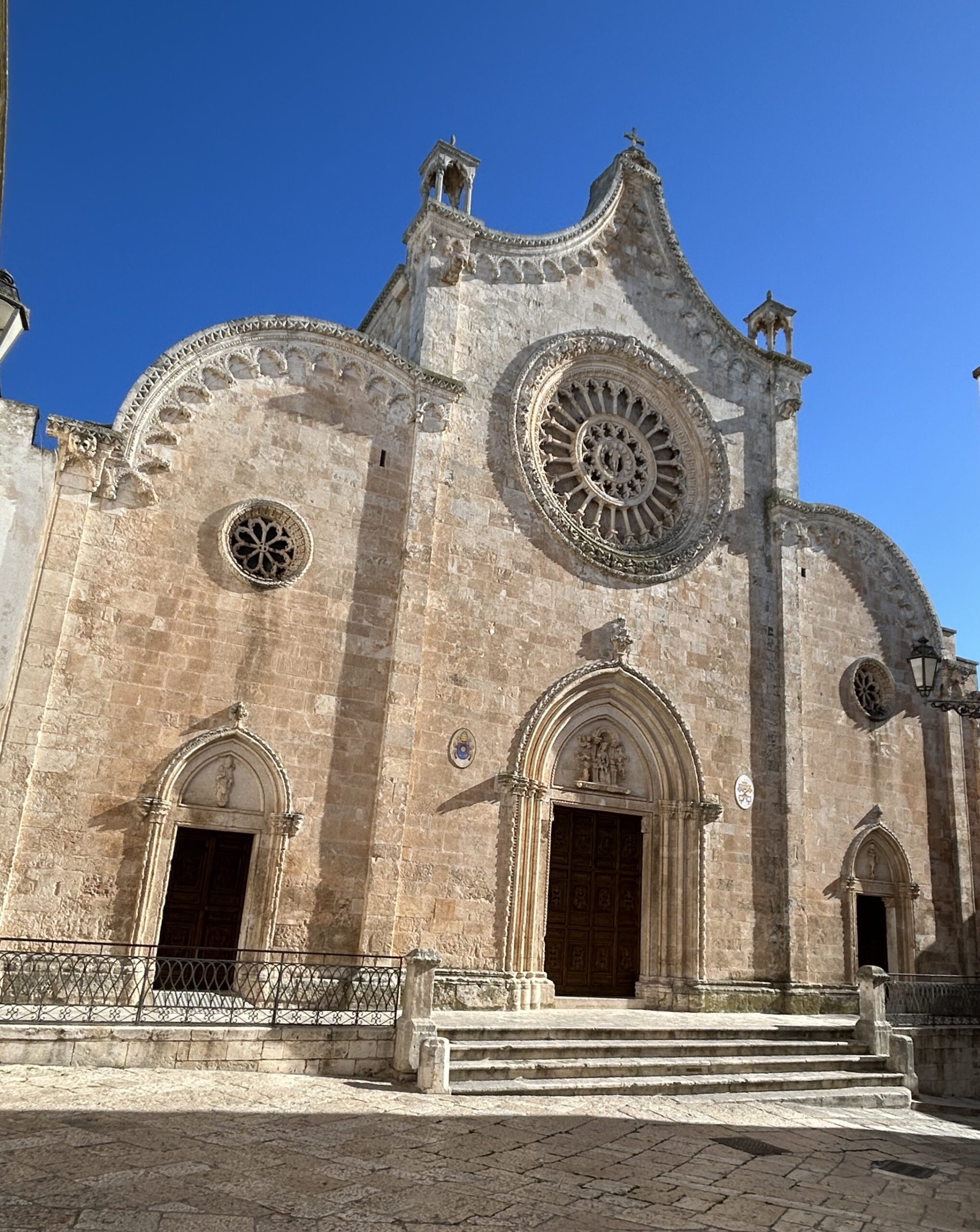
Ostuni Cathedral, built in the 1300s / Photo credit Carolyn Ray
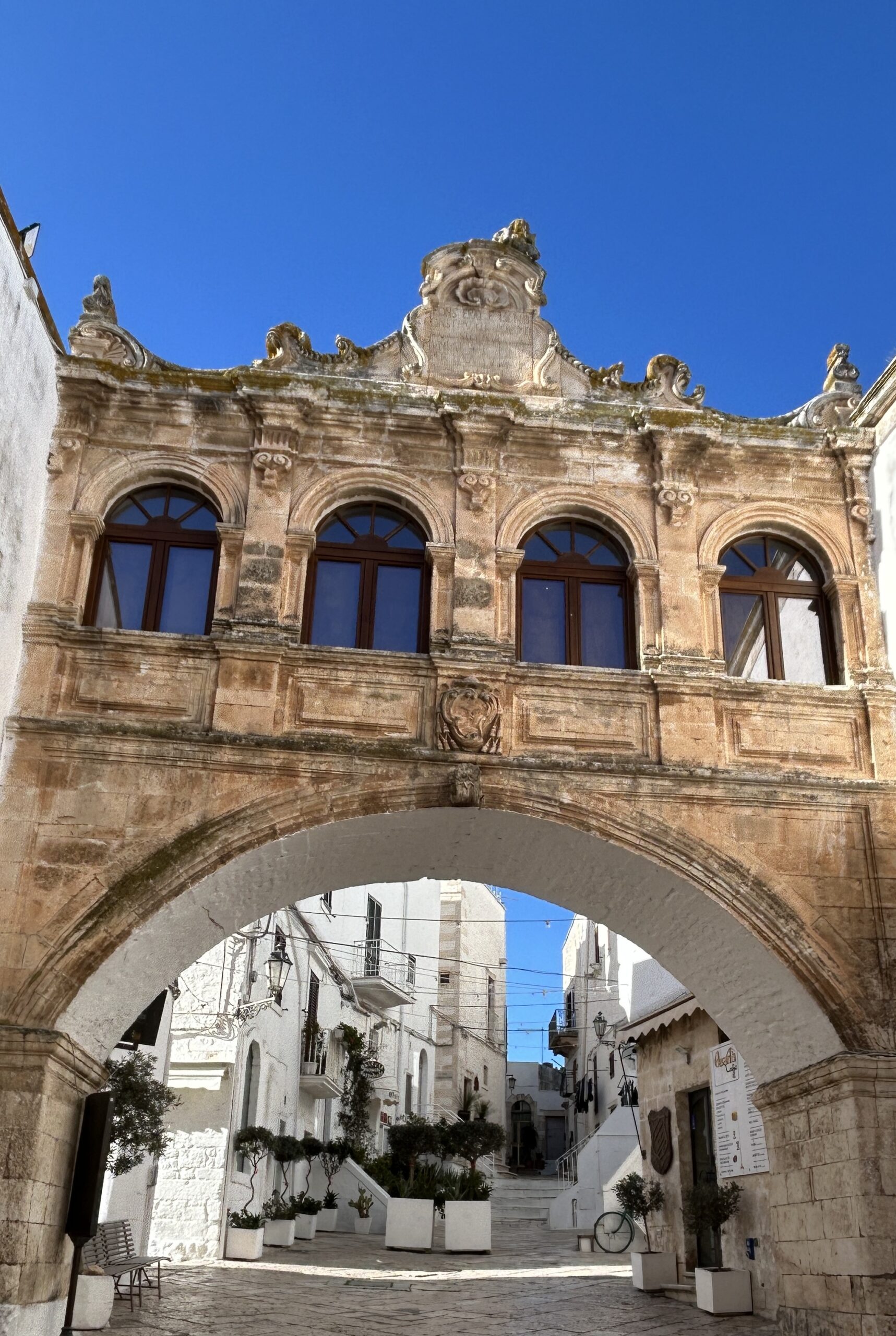
The Arco Scoppa in Ostuni / Photo credit Carolyn Ray

Many of the restaurants are in cellars / Photo credit Carolyn Ray
The Cathedral has a large rose window and magnificent ceiling, and inside the Cathedral, one Chapel is dedicated to the patron saints of Ostuni: Saint Blaise, Saint Augustine, Saint Orontius, and Saint Irene. All of these saints are venerated because of their connection to the earth, protecting the crops from rain, hail, pests and storms.
I’m surprised to learn that Ostuni was once part of Lecce and even shares the same saint, Saint Orontius, whose imposing statue is in the main square (as it is in Lecce). In the surrounding countryside there are farms called ‘masserie’, one of which, San Domenico, was once held by the Knights of Malta, another place on my low season travel itinerary. The more we travel, the more we connect the dots. Small world, isn’t it?
Special thanks to Kathy Wood from European Experiences for her advice on Puglia. Kathy leads women’s tours to this area which you can learn about here.
More about Ostuni
Where to stay: Try bed and breakfast Il Sogno delle Benedettine or stay at a local masseria (farm) in the surrounding countryside.
Travel by train: The Ostuni train station is an easy 5-minute bus ride away from the stop near the old town (2 euros, cash only). The train from Florence took about 7 hours, with one change at Bari Station. Find a trip on Trainline.
Bus: Upon arrival at the train station, there is a shuttle bus that brings you right into the old town.
Plane: There are two airports close to Ostuni – Bari, and Brindisi. I flew from Bari to Palermo, but there are also flights from Brindisi on RyanAir. Bari is a wonderful seaside city with lots to see. Find a flight here.
Rental car: You don’t need a car in town but it’s helpful for day trips. Rent one here.
More About Italy
15 Stunning Train Trips to Inspire Your Travels in 2025
These train trips across Europe, Asia, Africa and Canada remind us that the journey can be more memorable than the destination.
Where to Stay in Rome, Italy: Recommendations From Solo Women
Women share their top choices on where to stay in Rome, Italy, including hotels, hostels, and affordable options across the city.
Catania, Sicily, the Island of Dreams and Legends
Catania, Sicily offers rocky volcanic coastlines, where treasures of the ancient world sit next to Baroque monuments and charming villages.

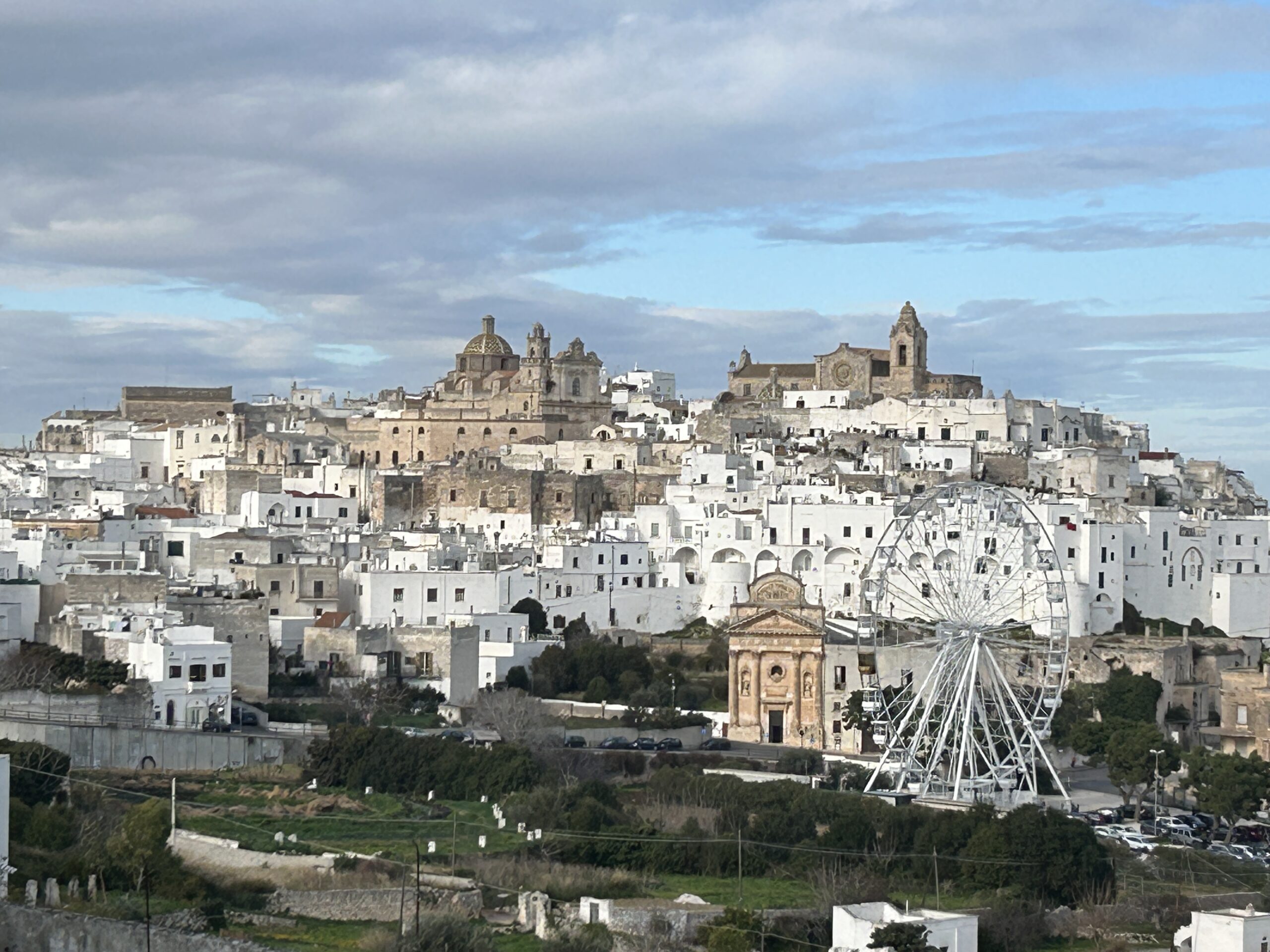





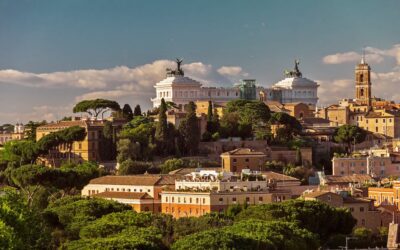
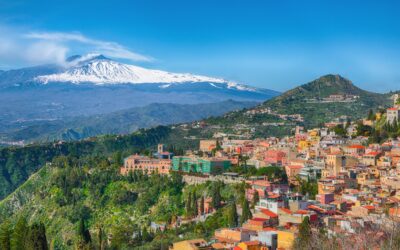
We are headed to Lecce, Ostuni and Bari in January. We love travel during the quiet seasons. Thanks for the information.